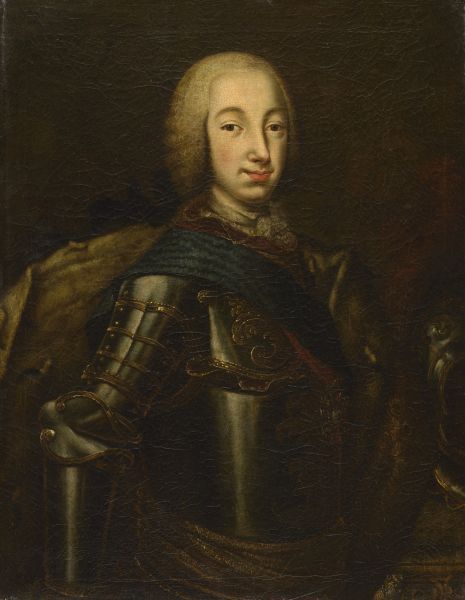|
|
Portrait of the Grand Duke Peter Fyodorovich

Antropov Alexei
88 x 68
Annotation
Peter Feodorovich (1728–1762) was the son of Tsarevna Anna Petrovna and Duke Charles Frederick of Holstein-Gottorp; he was also the grandson of two implacable enemies, Emperor Peter the Great of Russia and King Charles XII of Sweden. He became heir to the Russian throne in 1742 and was Emperor from 25 December 1761 to 28 June 1762, but was never crowned. He imitated Peter the Great in intending to carry out a number of reforms. The Manifesto on the Freedom of the Nobility, the abolition of the Office for Secret Investigation and the secularisation of church lands formed the basis of the legislative measures subsequently taken by Catherine the Great. The view of traditional historiography is that he was ignorant and feeble-minded. He was overthrown by a palace coup instigated by his own wife, the future Catherine the Great, and was soon killed.
Author's Biography
Antropov Alexei
Antropov, Alexei Petrovich
1716, St Petersburg - 1795, St Petersburg
Painter, portraitist, icon-painter. Studied under Louis Caravaque, Andrei Matveyev and Alexander Zakharov, took lessons from Pietro de Rotari (from 1732). Joined the painting department of the Ministry of Construction (1739), foreman (1749). Helped to decorate the interiors of palaces in and around St Petersburg and Moscow. Painted the interior decor of the Si Petersburg Opera House (1750). Created murals and icons for St Andrew’s Cathedral in Kiev (1750-55). Lived in St Petersburg (from 1758). Worked for the Holy Synod and supervised the work of painters (from 1761), Taught Dmitry Levitsky and Pyotr Drozhdin.

